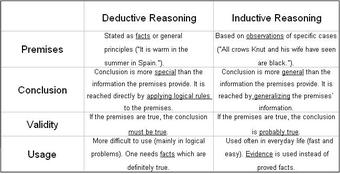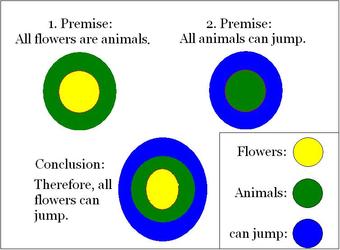15.1: Getting the Most Out of a Persuasive Speech
15.1.1: Expect Selective Exposure
In theory, people tend to select specific aspects of exposed information based on their pre-existing perspective, beliefs, attitudes, and decisions.
Learning Objective
Define selective exposure and explain its relation to persuasive speaking
Key Points
- The selective exposure theory is a concept that refers to individuals’ tendency to favor information that reinforces pre-existing views while avoiding contradictory information.
- Selective exposure operates by reinforcing beliefs rather than exposing individuals to a diverse array of viewpoints.
- Perceived usefulness of information, perceived norm of fairness, and curiosity regarding valuable information are three factors that can counteract selective exposure.
Key Terms
- selective exposure
-
The selective exposure theory is a concept in media and communication research that refers to individuals’ tendency to favor information that reinforces pre-existing views while avoiding contradictory information.
- audience
-
A group of people within hearing; specifically a group of people listening to a performance, speech etc.; the crowd seeing a stage performance.
Introduction

Does It Conform?
Similar to an audience enjoying a concert, the success of a persuasive speech can depend on people’s pre-existing views.
The selective exposure theory is a concept in media and communication research that refers to individuals’ tendency to favor information that reinforces preexisting views while avoiding contradictory information. This theory suggests that people tend to select specific aspects of exposed information based on their perspective, beliefs, attitudes, and decisions. People can determine the information exposed to them and select favorable evidence, while ignoring the unfavorable.
This theory has been explored using the cognitive dissonance theory, which suggests information consumers strive for results of cognitive equilibrium. In order to attain this equilibrium, individuals may either reinterpret the information they are exposed to or select information that is consonant with their view.
The premise of selective exposure relies on the assumption that information-seeking behavior continues even after an individual has taken a stance on an issue. Previous information-seeking behavior will be colored by various factors of the issue that is activated during the decision-making process. Thus, selective exposure operates by reinforcing beliefs rather than exposing individuals to a diverse array of viewpoints, which is considered an important aspect of a functioning democracy.
There are several factors that persuade one when making decisions. Physical characteristics, age, and more hold power to sway perception, luring people into habits of selective exposure. People often stray away from new information because it conflicts with their own beliefs; because information and resources are critical to learning this habit cripples the ability to learn new concepts and skills.
Selective exposure influences and family, friends, co-workers, even skilled professionals like doctors. Media forms such as the internet, television, and paper sources are also inclined to selective bias.
Selective exposure has been demonstrated in various contexts such as self-serving situations and situations where people hold prejudices regarding out-groups, particular opinions, and personal and group-related issues. The perceived usefulness of information, perceived norms of fairness, and curiosity regarding valuable information are three factors that can counteract selective exposure. Remember this as your prepare your persuasive speech.
How does selective exposure theory affect decision-making?
Selective exposure can affect the decisions people make because people may not be willing to change their views and beliefs. Changing beliefs about one’s self, other people, and the world are all challenges that cause people to fear new information.
A variety of studies have shown that selective exposure effects can occur in context of both individual and group decision making.
Selective exposure can interfere or prevent the gathering of new information. Selective exposure is prevalent in both groups of people and individually. In Jonas et al. (2001) empirical studies were done on four different experiments investigating individuals’ and groups’ decision making. This article suggests that confirmation bias is prevalent in decision making.
Those who find new information often draw their attention to areas where they hold some personal attachment. Thus, information that supports the expectations or beliefs held by the person draw greater attention, in keeping with selective exposure theory. Throughout the four experiments, generalization was reliably considered valid and confirmation bias was always present when test subjects sought new information and made decisions.
Tips for the Speaker
Be prepared. Like it or not, you are going to face selective exposure from your audience as you try to persuade them to accept your stance. When preparing your speech, remember that perceived usefulness of information, perceived norm of fairness, and curiosity regarding valuable information can counteract selective exposure.
15.1.2: Don’t Expect Too Much
The expectations for both the speaker and the effectiveness of the speech should be tailored for each speech.
Learning Objective
Modify your expectations for your speech and your performance
Key Points
- The expected effectiveness of each speech depends on a number of factors, such as the audience, venue, time allotted, and the speaker’s experience.
- The expected quality of the delivery depends on the speaker’s experience and comfort. Even the most gifted speakers make mistakes, so expecting perfection from a novice is unreasonable.
- Anxiety of public speaking sometimes is derived from the idea that the audience expects perfection. In reality, most audiences are sympathetic and want the speaker to succeed.
Key Term
- persuasion
-
the process aimed at changing a person’s (or a group’s) attitude or behavior
Persuasion is the influence of beliefs, attitudes, intentions, motivations, or behaviors to convince an audience of something. A persuasive speech should move the audience further along the pathway to believing that the espoused point of view is correct, but not all views can be explained in one speech and not every audience can be swayed at once.
The expectations of each persuasive speech should be tailored to the context of the speech. Factors such as the speech itself, the audience, the venue, the time allotted, and the speaker’s experience all need to be considered. For example, if you are not a doctor but are asked to give a five minute speech to the American Heart Association about why fast food is the best food for heart health, your chances of persuading everyone is pretty low. Even if you are the expert in the room, not everyone will be persuaded because each person requires different processes to be convinced. The purpose of the persuasive speech is to get the audience to think about your point of view and to accept some of the vital points, not necessarily to make them buy everything you’re selling.

Setting Expectations
Martin Luther King’s “I Have a Dream” speech is one of the most historic and powerful speeches in history.
Similarly, the expectations for the delivery of the speech should not be set too high. For a novice speaker to expect that he/she will never mispronounce a word, get nervous, or skip a paragraph is unreasonable. Every speaker goes through the process of making mistakes, and few, if any, speakers ever deliver a perfect speech. The expected quality of the delivery of the speech depends on each individual speaker’s experience and comfort level, though even the most gifted orators make mistakes.
Some of the anxiousness that often accompanies preparing for a speech is derived from the idea that the audience expects perfection. However, the surprising truth is that, in most cases, the audience is a sympathetic friend. Whether or not the audience knows who you are, human nature dictates that they are very sympathetic to you and what you have to say. Most people appreciate the difficulty of your role, understand that you have something to say, and want the time they spend listening to you to be worthwhile. In other words, before you start speaking, most audiences have a vested interest in wanting you to succeed, and that translates into an attentive, supportive group.
15.1.3: Employ Empathy and Sensitivity
Appeals to empathy and sensitivity can be exceedingly effective, but only if used correctly.
Learning Objective
List the benefits and drawbacks of using an emotional appeal in your speech
Key Points
- Appeals to empathy and sensitivity are called emotional appeals. Emotional appeals seek to impart certain feelings in the audience so that they will act a certain way. They can be much more powerful than logical arguments in some situations.
- To deploy an emotional appeal you need to share carefully selected information that naturally makes your audience feel a certain way.
- Audiences can sense inauthentic emotional appeals and react negatively because they feel that they are being negatively. Poorly used emotional appeals can have the exact opposite effect than intended.
Key Term
- emotional appeal
-
An an attempt to make the audience feel certain emotions so that they will be more likely to be engaged by the speech. Also known as pathos.
Appealing to the empathy and sensitivity of the audience is broadly termed an emotional appeal. Emotional appeals can be a powerful rhetorical element of a persuasive speech. They are an attempt to make the audience feel something, and in the process, be persuaded by the speech . A crowd that is feeling something is much more likely to be engaged, give consideration to your arguments, and remember the speech.

Tapping into Emotions
A speaker can use emotional appeals in an attempt to get audience members to feel a certain way.
Appeals to empathy and sensitivity can create a sense of connection and trust between you and the audience. Since trust and connection are vital elements of being able to persuade an audience, emotional appeals can be incredibly useful.
However, emotional appeals can also backfire if used incorrectly. If taken too far, an appeal to emotion can seem to be forced. Audiences can tell the difference between an honest emotional appeal and an attempt is to manipulate how they feel. Audiences loathe feeling manipulated, so an audience that senses inauthentic motives will strongly reject both the appeal and the speaker.
When the emotional appeal is both authentic and appropriately used, you can develop a much stronger connection to your audience than by using logic alone. However, to misuse an emotional appeal is to completely alienate your audience, and even foster negative feelings.
15.1.4: Using Different Kinds of Appeals
The two primary kinds of appeals are evidential and emotional appeals.
Learning Objective
Identify the two most prevalent kinds of appeals
Key Points
- Aristotle defined 3 types of appeals: logos (evidential), pathos (emotional), and ethos (based on moral standing). Logos and pathos are the two most common contemporary categories.
- Evidential appeals (logical appeals, logos) are based entirely on evidence that is then shown to cause a certain outcome based on rationality alone. This is the type of appeal allowed in scientific research and in courts of law.
- Emotional appeals (pathos) attempt to cause the audience to feel certain emotions in order to persuade them. Stories and metaphors are examples of emotional appeals.
Key Terms
- evidential appeal
-
An attempt to show the logical connection between a set of evidence and a consequence. Also known as logical appeal or logos.
- emotional appeal
-
An an attempt to make the audience feel certain emotions so that they will be more likely to be engaged by the speech. Also known as pathos.
Use Different Kinds of Appeals
According to Aristotle, there are three primary types of appeals:
- Logos: A logical appeal. Also known as an evidential appeal.
- Pathos: An appeal to the audience’s emotions.
- Ethos: Moral expertise and knowledge.
For the purposes of this section, we will explore the two broadest and prevalent appeals, logos and pathos.
Logos (Evidential or Logical Appeal)
From a rationalist’s point of view, evidential appeals are the only type of appeal that truly matter. Evidential appeals are formed by defining the evidence and then explaining how the evidence must logically prove that a certain conclusion must be true. Evidential appeals are the only type of persuasive speech allowed in a court of law; the evidence must prove that the defendant has committed the crime in order for that person to be found guilty .

Evidential Appeal
The only type of rhetorical appeal accepted in a courtroom in an evidential appeal.
Evidential appeals are also the basis for scientific research. A scientist must be able to show the connection between evidence and a conclusion in order for his/her work to be accepted. In persuasive speaking, the speaker must first explain the evidence in a way that is comprehensible to the audience, yet complete. Then the scientist must explain how that evidence logically leads to a consequence that supports his/her proposal.
Pathos (Emotional Appeal)
An emotional appeal is intended to cause the audience to feel a certain way so that they will be convinced by the speaker. Emotional appeals can manifest in a number of ways. Metaphors, stories, and passionate delivery are all emotional appeals because their effectiveness lies not only in the words, but in the emotions they evoke in the audience. Ultimately, the effectiveness of an emotional appeal is determined only by the audience. If the audience does not feel the intended emotions, by definition, the appeal has failed.
15.2: Credibility Appeals
15.2.1: Defining Credibility
Credibility is defined as the objective and subjective components of the believability of a source or message.
Learning Objective
Give examples of how to boost subjective and objective credibility
Key Points
- Credibility is a composite of subjective and objective factors, so it relates to feelings and opinions, as well as facts and evidence.
- The subjective component of a public speaker’s credibility centers on the speaker’s self-presentation.
- The objective aspect of a public speaker’s credibility is based on the speaker’s expertise.
Key Terms
- Objective
-
not influenced by irrational emotions or prejudices; based on facts or evidence.
- subjective
-
formed, as in opinions, based upon a person’s feelings or intuition, not upon observation or reasoning; coming more from within the observer than from observations of the external environment.
- credibility
-
The objective and subjective components of the believability of a source or message.
Defining Credibility

Unmasking Credibility
Credibility is personal. In order to establish credibility, unmask yourself and show the audience who you really are.
What is credibility? Credibility is defined as the objective and subjective components of the believability of a source or message. Credibility is both objective, or based on facts and evidence, and subjective, based on opinions and feelings. This quality encompasses everything from your college degree or professional certification to the immediate “gut feeling” people get when they walk into the room.
Subjective Credibility: Self-Presentation
The subjective aspect of a public speaker’s credibility is based on the speaker’s self-presentation. Here are some tips for earning credibility on a subjective level:
- Dress the part. Show the audience that you take the speaking engagement seriously, and that you hope to earn their respect. If you’re not sure how to dress, professional attire is always a safe bet.
- Look at the audience. Establishing eye contact will make you seem open and trustworthy.
- Speak loudly, clearly, and confidently. If you have confidence in yourself, the audience will too.
Objective Credibility: Expertise
Mark Twain once said that an expert is just “an ordinary fellow from another town. ” If only it were that easy! In reality, if you want to convince the audience that you are an expert, you will have to show some credentials. Here are three ways to establish objective credibility:
- State your credentials. Audiences will trust you more readily if you can prove that other people value your expertise. Credentials include relevant degrees, certifications, testimonials, recommendations, work experience, volunteer experience, and informally, other types of personal experience.
- Reveal a personal connection to your topic. Your input will have more weight if you can demonstrate that the topic means something to you.
- Establish common ground with your audience. If you can explain that, ultimately, you all want the same thing, the audience will be much more likely to trust you and accept your message.
15.2.2: Types and Elements of Credibility
Experience, training, and associations and connections are all important factors that can boost credibility.
Learning Objective
Identify types of credibility and describe their use
Key Points
- Personal experience in the workplace, at home, in a hobby, or volunteering situations can bolster your credibility. You can support the validity of your experience with testimonials and personal recommendations.
- Formal or informal training that relates to your topic can also support your credibility.
- If you connect yourself and your message to credible people, your own credibility will benefit from the association.
Key Term
- credibility
-
The objective and subjective components of the believability of a source or message.
Types and Elements of Credibility
Credibility from Experience

Experience Is Important
These mountain climbers are scaling a sheer cliff in the Rhone-Alps of France. They have credibility due to their experience.
Imagine this scenario: you, a veteran mountain climber, are slated to give a speech about climbing safety to a group of mountaineers that is about to set off on a dangerous expedition. What would be the best source of credibility in that situation? Experience! The mountaineers would probably not be very impressed to hear that you read a book about climbing safety once, or that some of your best friends are mountaineers. However, if you bring in stories, photographs, and examples from your own climbing experience, you will assure them that you really know what you’re talking about. Drawing from your work experience, volunteering experience, hobbies, and informally, other types of personal experience can do a lot to boost your credibility as a speaker.
Credibility from Training
Do you have any formal or informal training that relates to your topic? If so, mention it during your speech to build your credibility. Relevant training programs and credentials include academic degrees, professional certifications, classes, conferences, and personal research. Even if your training isn’t directly related to your topic, there may be an indirect connection. Don’t feel obligated to stretch your story if it really doesn’t fit, but also don’t rule out training experiences that are out of your current field.
Credibility by Association
The first method for estimating the intelligence of a ruler is to look at the men he has around him.
-Niccolo Machiavelli
Machiavelli’s maxim teaches a valuable lesson: people will not only judge you on your own merits alone, but also on the merits of your associates. This rule isn’t only for rulers, it applies to public speakers too. If you want to be seen as a credible person, align yourself with other credible people. You can do this by citing testimonials from respected figures or mentioning personal recommendations that validate your expertise. Another approach is to quote prominent figures in your field, demonstrating an awareness of the issues and conversations that are current trends in that field.
15.2.3: Building Credibility
If you want to build credibility with your audience, you must demonstrate that you are a person of character.
Learning Objective
List ways to display personal character in order to build credibility with an audience
Key Points
- Establishing your good character is a crucial part of winning the audience’s trust.
- For a public speaker, character is not only about being a good person or a law-abiding citizen; speakers should also be looking out for the needs of their listeners.
- To show your listeners that you care about their needs and interests, find common ground with the audience, appeal to shared beliefs and goals, and entertain potential objections.
Key Term
- character
-
Moral strength; consistency of values and principles.
Character may almost be called the most effective means of persuasion. –Aristotle
You can not dream yourself into a character; you must hammer and forge yourself one. –James A. Froude
Greek philosopher Heraclitus’s famous maxim, “Character is destiny,” has echoed through the ages: if you want to win the audience’s trust, you must demonstrate that you are a person of character. Aristotle argues that establishing good character is one of the most important means of persuasion. Roman orator Quintillian defines persuasive rhetoric as essentially “the good man speaking well. ” British historian James A. Froude takes the colloquial idea of “building character” one step further, leading us to imagine a laborious undertaking in a blacksmith’s forge, shaping “character” with a hammer. The literature surrounding public speaking emphasizes the importance of establishing good character, but also admits that it is not easy.
Credibility, Character, and Caring
Personal character is an important addition to the elements of credibility we discussed in the last segment . However, it is important to note that, for a public speaker, character is not as simple as being a nice person or a law-abiding citizen. Public speakers are responsible for communicating something of value to a large group of people. A public speaker of character should listen to the needs of the audience, entertain potential objections, walk the audience through opposing viewpoints, and respond to questions. Show your listeners that you’re looking out for them. After all, why should they trust you if you don’t care about them? To bring the audience’s needs and interests to the forefront of your speech, follow these steps:

Building Credibility
Credibility is built through character, trustworthiness, experience, expertise, and associations/connections.
- Find common ground with your audience.
- Appeal to shared beliefs and values.
- Identify a shared goal.
- Return to this shared goal throughout the speech.
- Demonstrate that you have considered other perspectives on the issue.
- Show that you understand the appeal of opposing positions.
- Make a case for your own position.
15.2.4: Ethical Usage
Credibility appeals, while an effective form of persuasive speaking, carry a unique set of ethical challenges and considerations.
Learning Objective
Explain the ethical challenges of using credibility appeals in persuasive speaking
Key Points
- There are three types of appeal techniques in persuasive speaking: logos, pathos and ethos. Ethos is focused on the credibility appeal, that is, a rhetorical appeal to an audience based on the speaker’s credibility.
- It is unethical to lie to your audience about who you are and what you bring to the table in terms of experience, credibility and authority.
- When it comes to ethical usage of credibility appeals, stick to authenticity and speaking honestly about who you are.
Key Term
- ethos
-
A rhetorical appeal to an audience based on the speaker/writer’s credibility.
Example
- A job interview represents a persuasive speaking opportunity on a much smaller scale, one that relies heavily on the use of ethos. You are, in essence, persuading a potential employer to hire you on the merits of your abilities, skills and experience. An ethical job candidate will deliver a résumé and interview responses that are truthful, honest and complete about who they are and what they would bring to the job. An unethical use of ethos by a job candidate would be when one “pads” their résumé with experiences and honors that may not actually have happened or been achieved.
Ethical Usage of Credibility Appeals

Appeal Techniques
The three types of appeal techniques in persuasive speaking are logos, ethos, and pathos.
Speeches grounded in the principles of rhetoric focus on three types of rhetorical appeals: logos, pathos, and ethos. While logos and pathos appeal to reason and emotion, respectively, ethos takes on a decidedly different approach entirely. Speakers using ethos seek to persuade their audience by demonstrating their own credibility and authority.
To elaborate, the construction of authority is reflected in how a speaker presents themselves, what diction they use, how they phrases their ideas, what other authorities to which they refer, how they composes themselves under stress, their experience within the context of their message, as well as their personal or academic background.
Ethical Considerations
Obviously, if you elucidate a persuasive portrait of your personal credibility and authority, you make a more persuasive case on the credibility and authority of your words. However, when building a persuasive case using ethos, it may be tempting to stray into territory that borders on the unethical. Consider the following example:
You might not realize it at first, but interviewing for a job is an abbreviated form of persuasive speaking. You’re trying to persuade an employer to offer you a job. This method of persuasion relies heavily on the use of ethos, as you’re trying to make your case as to why you’re the best person for the job.
When you submit your résumé and cover letter, you provide your potential employer with an overview of your skills, experiences and background and how they best fit with the position and company with whom you seek employment.
While many employers complete extensive background reviews and reference checks, they may not follow up with every single bullet point on your résumé. While it might be tempting to beef up your list of achievements by stretching the truth: naming yourself a college club president as opposed to member, listing an award you may have nominated for but not having won (without clarifying that fact) – these are all unethical ways of padding your résumé, and thus, unethically using ethos to persuade your potential employer to hire you for the job.
This same example holds true in more formal scenarios of persuasive public speaking. It is unethical to lie to your audience about who you are and what you bring to the table in terms of experience, credibility and authority. It is equally unethical to even bend the truth on the slightest detail about what makes you a credible or authoratative speaker on your given subject.
Whether it’s a flat-out moment of dishonesty or a simple “little white lie,” disingenuousness, once discovered, will eradicate any credibility or authority you have as a speaker. When it comes to ethical usage of credibility appeals, stick to authenticity and speaking honestly about who you are.
15.3: Evidentiary Appeals
15.3.1: Defining Evidence
Evidence refers to the available body of facts or information indicating whether a belief or proposition is true.
Learning Objective
Explain how accuracy, audience understanding and relevant context assesses the strength of evidence in persuasive speaking
Key Points
- Accurate, contextual, easily understandable evidence builds credibility to your persuasive argument.
- The success or failure of an evidential appeal depends on how well the evidence has been defined and laid out for the audience.
- Any information used as evidence must be complete enough that it strengthens the appeal. Otherwise, weak evidence will only erode the argument.
- Name and define the evidence only as comprehensively as the scope of the speech allows; dense supporting materials can actually confuse your audience by overwhelming them with too much or too deeply defined evidence.
Key Term
- evidence
-
The available body of facts or information indicating whether a belief or proposition is true or valid.

Finding Evidence
Sherlock Holmes (played here by actor Benedict Cumberbatch) always looked for a solid body of evidence to indicate a particular criminal.
Evidence refers to the available body of facts or information indicating whether a belief or proposition is true. The facts and information affirm the validity of the idea. To understand it in the opposite, to lack evidence is to lack the validity of a belief or idea. Evidence builds credibility.
As the name suggests, evidential appeals rely on the use of evidence to persuade the audience. Evidential appeals can be used in both emotional and logical appeals, though the method for delivery differs. The success or failure of the appeal depends on how well the evidence has been defined and laid out for the audience.
In the context of persuasive speaking, evidence can be evaluated for its persuasive ability in the following three ways:
- Accuracy: The evidence must be truthfully constructed and defined. For example, if an argument hinges on the premise that grass is purple, no rhetorical technique will be able to persuade the audience. Evidence must be accurate to be credible, as its credibility rests on its accuracy.
- Audience Understanding:Evidence must be presented completely, but in a manner that the audience can comprehend. For example, an evidential appeal that uses rising carbon dioxide levels as evidence for stricter pollution regulation will not be effective if the audience does not know what carbon dioxide is or why it is bad for the environment. The audience must be able to understand the evidence before it is used in an appeal.
- Relevant Context: The evidence must be defined within the context of the appeal. A textbook definition of the different types of bonds between the atoms of carbon dioxide is not relevant information for why the tax rate should be lowered.
Information used in evidential appeals must serve two purposes at once. First, it must be complete enough that it strengthens the appeal. If the evidence is weak, incomplete, or irrelevant, it does not help the appeal, and may even hurt its persuasiveness. Secondly, the evidence must be defined only as comprehensively as necessary. The purpose of an evidential appeal is to persuade the audience; overwhelming the audience with too much information or evidence may only confuse them.
15.3.2: Deploying Evidence
Deploy accurate, relevant, and thorough evidence strategically in order to most effectively argue your point.
Learning Objective
Explain why speakers must consider accuracy, relevancy, and thoroughness when deploying evidence in public speaking
Key Points
- When crafting your speech, consider the following three areas: accuracy, relevance, and thoroughness.
- Make sure that your evidence, be it facts, statistics, personal testimony, or other pieces of information, comes from credible sources.
- Make sure your evidence is directly related to the points you are trying to make while also anticipating competing evidence that may contradict your line of reasoning.
- By thorough by fully explaining and defining your evidence to your audience, but don’t overwhelm them in the process.
Key Terms
- thorough
-
painstaking and careful not to miss or omit any detail
- evidence
-
The available body of facts or information indicating whether a belief or proposition is true or valid.
- Accuracy
-
Exact conformity to truth, or to a rule or model; degree of conformity of a measure to a true or standard value.
When using evidential appeals in your persuasive speech, make sure to deploy evidence strategically in order to most effectively argue your point.

Gathering Evidence
In persuasive speaking, the speaker must gather and deploy evidence strategically.
Strategies for Deploying Evidence Effectively
As you craft your persuasive speech, ask yourself the following questions:
Is My Evidence Accurate?
It can’t hurt to double check. Make sure that your evidence, be it facts, statistics, personal testimony, or other pieces of information, comes from credible sources. How do you know if it’s a credible source? If they are well-known, respected leaders or sources of information in a given field, you can be fairly confident in their credibility. As for web sources, make sure the site you’re accessing is impartial and unbiased. It’s also helpful to anticipate any questions your audience may have about your evidence, including any challenges they may make to its credibility or accuracy.
Is My Evidence
Relevant
?
Just how well does your evidence actually back up your argument? Just because it might be believable to you does not mean it will be as compelling to another. That disconnect might occur when your evidence is not actually relevant to your argument. Make sure your evidence is directly related to the points you are trying to make. Likewise, your audience may have evidence of their own to contradict your line of reasoning; anticipate these contradictions and argue your point with evidence to counter their disagreements. In short, keep your evidence relevant, but make sure to have more up your sleeve if needed to further prove your point.
Is My Evidence Thorough?
Sometimes your case may not be compelling simply because you haven’t fully supported your thesis. Your evidence may only skim the surface. It’s a fine balance between thoroughly explaining and defining your evidence to your audience and overwhelming them in the process. In this regard, it’s important to have a comprehensive understanding about the knowledge base of your audience. Let the lowest level of understanding in your audience dictate how thorough you need to be; at the same time, don’t over-explain or get into so much depth that you lose more of your audience than you win over.
15.3.3: Ethical Usage: Considering Other Viewpoints
Persuasive speakers have an ethical duty to consider opposing viewpoints and evidence before being sure that theirs are correct.
Learning Objective
Explain why considering other viewpoints is considered ethical in public speaking
Key Points
- The same evidence can be interpreted differently by different people.
- Falsified evidence (intentionally or unintentionally) is unethical to use. Finding false evidence that is due to statistical fallacy can only be found after deep critique.
- If an argument can withstand the honest critique of an opponent and is based on true and complete evidence, then the appeal is on sound ethical ground.
Key Term
- fallacy
-
An error in reasoning often due to a misconception or a presumption; used in informal discourse to mean an argument which is problematic for any reason
The honest consideration of other viewpoints is an ethical duty if you are a persuasive speaker seeking to convince the audience of something you believe to be true. You may be making the wrong conclusion based on the evidence or your evidence may be flawed, both of which can be shown by examining other views. Perhaps you and your opponent are using the same evidence but come to different conclusions. If you are able to consider other viewpoints and still believe in your original view, then you are ethically able to attempt to persuade others.

Different Viewpoints
Political debates highlight how people can interpret the same evidence different ways and come to opposing views.
As a persuasive speaker, there is always an incentive to invent, or even just fudge evidence so as to strengthen your appeal and weaken opposing viewpoints. However, this is akin to lying, and clearly unethical.
Furthermore, evidence must generally be accepted only after intense scrutiny. Statistics, and many types of evidence, do not fall neatly into the category of “true” or “false.” While there are some undeniable truths, such as the fact that the earth is round, there are many more that fall into a gray area. This is due to the fact that evidence comes from a process which may be flawed. When the process is flawed, there may be a statistical fallacy. For example, if a survey asks skewed questions, the results may not reflect the truth. Though many researches, scientists, pollsters, and investigators do their best to avoid fallacies, the possibility always exists that one may be proven.
Since it is very easy to unintentionally lie by not explaining all the nuances of the evidence and it is very easy to use evidence that may contain fallacies, it is the duty of every speaker to consider the viability of opposing viewpoints before rejecting them. It is your ethical duty to allow others to criticize your viewpoints because if your argument is truly sound and you are truly making the appeal to convince the audience of something that you believe to be true based on all the evidence, then your evidence should be able to withstand the scrutiny.
15.4: Logical Appeals
15.4.1: Different Lines of Reasoning
Apply two different lines of reasoning—inductive and deductive—to consciously make sense of observations and reason with the audience.
Learning Objective
Demonstrate the use of inductive and deductive reasoning
Key Points
- Inductive reasoning, also known as induction, is a kind of reasoning that constructs general propositions that are derived from specific examples.
- Inductive reasoning is probabilistic; it only states that, given the premises, the conclusion is probable.
- One important aspect of inductive reasoning is associative reasoning: seeing or noticing similarity among the different events or objects that you observe.
- Deductive reasoning is the process of reasoning from one or more general statements, laws, or principles regarding what is known, in order to reach a logically certain conclusion.
Key Terms
- inductive reasoning
-
A kind of reasoning that constructs or evaluates general propositions that are derived from specific examples. Inductive reasoning contrasts with deductive reasoning, in which specific examples are derived from general propositions.
- syllogism
-
An inference in which one proposition (the conclusion) follows necessarily from two other propositions, known as the premises.
- deductive reasoning
-
The process of reasoning that uses given true premises to reach a conclusion that is also true. Deductive reasoning contrasts with inductive reasoning.
Reason is the capacity for consciously making sense of things. Reason, or “reasoning,” is associated with thinking, cognition, and intelligence. It is the means by which rational beings understand cause and effect, truth and falsehood, validity, and what is good or bad. The result is a reason that could then be used to explain or justify some event, phenomenon, or behavior.
As you develop arguments for your persuasive speech, you are likely to engage in two different lines of reasoning: inductive, which uses associations, and deductive.
Inductive Reasoning and Associative Reasoning
Inductive reasoning, also known as induction, is a kind of reasoning that constructs general propositions that are derived from specific examples based on previous observations. One important aspect of inductive reasoning is associative reasoning: seeing or noticing similarity among the different events or objects that you observe. For example, if you throw a ball in the air and it comes back down, again and again, you observe the same event happening and are likely to conclude that when you kick a ball in the air, it will come back down.
Inductive reasoning is probabilistic; it only states that, given the premises, the conclusion is probable. Consider these simple logical statements, known as syllogisms. Here is a statistical syllogism to illustrate inductive reasoning:
- 90% of humans are right-handed.
- Joe is a human.
- Therefore, the probability that Joe is right-handed is 90%. If you were required to guess, you would choose “right-handed” in the absence of any other evidence.
Here is another stronger example:
100% of life forms that we know of depend on liquid water to exist. Therefore, if you discover a new life form, it will probably depend on liquid water to exist.
This argument could have been made every time a new life form was found, and would have been correct every time. While it is possible that in the future a life form that does not require water will be discovered, in the absence of other factors, the conclusion is probably correct, as it has been in the past.
Inductive reasoning is used to determine properties or relationships based on previous observations or experiences, and then to formulate general statements or laws based on limited observations of recurring phenomenal patterns. The conclusion of an inductive argument follows with some degree of probability.
Inductive reasoning involves association or analogical reasoning. In order to engage in inductive reasoning, we must observe, see similarities, and make associationsbetween conceptual entities. The ability to structure our perceptions relies on the associative network in our brain, which allows us see the likeness and form a concept, about the similarities.

Deductive and Inductive Reasoning
There are key differences between deductive and inductive reasoning.
Deductive Reasoning
Deductive reasoning, also called deductive logic, is the process of reasoning from one or more general statements, laws, or principles regarding what is known, in order to reach a logically certain conclusion. Deductive reasoning involves using given, true premises to reach a conclusion that is also true. If you accept or know the general principle as true, then you can apply it to the specific case to conclude that it is also true.
Consider the general principle of the law a gravity: what goes up must come down. Now, when you throw the ball in the air, you conclude that it will fall down based on your knowledge of the general law of gravity. Deductive reasoning contrasts with inductive reasoning in that a specific conclusion is arrived at from the general principle when reasoning deductively. If the rules and logic of deduction are followed, this procedure ensures an accurate conclusion. Here is a classic example of a deductive argument:
- All men are mortal.
- John is a man.
- Therefore, John is mortal.
The first premise states that all objects classified as “men” have the attribute “mortal. ” The second premise states that “John” is classified as a “man”—a member of the class or group of “men. ” The conclusion then states that “John” must be “mortal” because he inherits this attribute from his classification as a “man. ” If both premises are true, the terms are clear, and the rules of deductive logic are followed, then the conclusion of the argument follows by logical necessity.
Conclusion
In summary, with inductive reasoning, you are making observations of specific or particular events and then drawing a general conclusion; whereas with deductive reasoning, you are starting with a general statement and applying it to particular instances when you draw your final conclusion about a particular instance, person, or object.
15.4.2: Deploying a Rational Appeal
A rational appeal uses logical arguments and factual evidence to persuade individuals.
Learning Objective
Explain how to construct a rational appeal
Key Points
- Deploying rational appeals focuses on reasoning and how you use evidence to reason with your audience and invention, how arguments are formed based on the classical proof of logos–rational appeal and logic.
- The burden of proof is on you the speaker to develop the right appeals for the particular audience.
- When deploying deductive reasoning consider whether or not the audience is likely to accept the general premise as valid and true before you attempt to deduce other ideas or courses of action based on the general premise.
- When deploying inductive reasoning consider if you have observed or collected enough evidence to draw a highly probable conclusion.
- When deploying associative reasoning, you will want to make sure that the ideas are indeed similar and that there are not obvious or outstanding differences which would negate the association you propose.
- As you deploy a rational appeal consider if your reasoning is sound, whether the audience will accept your evidence and reasoning, and what objections the audience might raise so you can address the most significant points of disagreement in your message.
Key Term
- Invention
-
the formulation of arguments based on logos–rational appeal or logic.
Forming a Rational Appeal
A rational appeal uses logical arguments and factual evidence to persuade individuals that whatever thesis you are supporting is viable and likely to result in the obtainment of goals. When you focus on rational appeals you are dealing with the mind and cognition of the audience .

The Mind
When you focus on rational appeals, you are dealing with the audience’s mind and cognition.
The study of rhetoric has historically focused on three types of persuasive appeals–ethos, pathos, and logos. Our focus on reasoning and how you to use evidence to reason with your audience is part of the study of logos. Additionally, you are concerned with invention, which is the first of the five canons of rhetoric identified by Cicero, the classical Roman rhetorician. Invention is how you formulate arguments based on logos–rational appeal or logic.
When you appeal to reason you use logically constructed arguments using your evidence to persuade your audience to agree with you. You might use many different forms of evidence to support your rational appeal. Basically, the burden of proof is on you the speaker as you develop your appeals to the audience. As you deploy a rational appeal consider: Is my reasoning sound, and what will the audience accept as a believable evidence?
Is Your Reasoning Sound?
Prior to your speech, it is important to consider the soundness of your evidence and reasoning.
Deductive reasoning: For example, if you are engaging in deductive reasoning, you will want to consider whether or not the audience is likely to accept the general premise as valid and true before you attempt to deduce other ideas or courses of action based on the general premise.
If you are quoting an authority and drawing conclusions from the authority, it is important to ask if the audience will accept or believe the authority. Remember to quote or use sources that the audience is familiar and will believe; using other authorities or sources will likely not be productive.
Inductive reasoning: If you are engaging in inductive reasoning, you will want to consider whether you have observed or collected enough evidence to draw a highly probable conclusion. Or, did you draw a hasty conclusion based on too few examples or observations?
If you are using statistical evidence as part of your inductive reasoning, it is important to consider how the data was collected and whether it is truly valid. If you do not have valid statistical data, then the inductions will not be valid. Before using any data, ask:
- Is the source biased, or perceived as biased?
- Is the source competent in the field being consulted?
- Is the information current?
Associative reasoning (analogy): When engaging in associative reasoning, you will want to make sure that the ideas are indeed similar and that there are no obvious or outstanding differences which would negate the association in the mind of your audience.
Address Resistance and Concerns of the Audience
Finally, in persuasive situations it is important to anticipate the potential resistance and counterarguments your audience might feel. When you have a sense of what objections the audience might raise, you can and should address the most significant points of disagreement in your message.
Arguments from reason (logical arguments) have some advantages, namely that data are (ostensibly) difficult to manipulate, so it is harder to argue against such an argument; and such arguments make the speaker look prepared and knowledgeable to the audience, enhancing ethos. In addition, if you have built ethos with the audience then it will enhance your appeal with arguments from reason.
15.4.3: Logical Fallacies
A fallacy is an error in reasoning; there are two basic categories of fallacies–formal and informal.
Learning Objective
Give examples of formal and informal logical fallacies
Key Points
- “Formal” refers to the form of the argument. An argument that contains a formal fallacy will always be invalid. However, even if a premise is not accurate, the formal conclusion could still be valid if the rules of logic are followed.
- An informal fallacy is an error in reasoning that occurs due to a problem with the content, rather than mere structure, of the argument and is often due to a misconception or a presumption.
- Common Fallacy–hasty generalization: argues from limited examples or a special case to a create general rule that applies to many cases.
- Common Fallacy–Popular sentiment or bandwagon appeal (argumentum ad populum):—appeal to the majority; appeal to loyalty, “Everyone is doing it”.
- Common Fallacy–If it comes before, it is the cause, post hoc ergo propter hoc: believing that temporal succession implies a causal relation.
- Common Fallacy–Two events co-occurring is not causation, cum hoc ergo propter hoc: believing that correlation implies a causal relation.
Key Terms
- fallacy
-
An error in reasoning often due to a misconception or a presumption; used in informal discourse to mean an argument which is problematic for any reason
- straw man
-
An insubstantial concept, idea, endeavor or argument, particularly one deliberately set up to be weakly supported, so that it can be easily knocked down; especially to impugn the strength of any related thing or idea.
- red herring
-
A clue or information that is or is intended to be misleading, that diverts attention from a question;often thought to relate to using smelly fish to train dogs to recognize the real scent of something they were suppose to be tracking.
Errors in reasoning–formal and informal
A fallacy is an error in reasoning. There are two basic categories of fallacies–formal and informal.
Formal Fallacies
Formal fallacies occur when there is a problem with the form, or structure, of the argument. “Formal” refers to the form of the argument. An argument that contains a formal fallacy will always be invalid.
Consider an example with a visualization of faulty reasoning involving categorical deduction.

Categorical Deduction
Deductive reasoning can be valid, while the major premise is not valid.
- All flowers are animals.
- All animals can jump.
- Therefore, all flowers can jump.
Even though it is quite obvious that the first premise is not true and further that the conclusion is not true, the whole syllogism is still valid. By applying formal logic to the syllogism in the example, the conclusion is still valid.
Informal Fallacies
An informal fallacy is an error in reasoning that occurs due to a problem with the content, rather than mere structure, of the argument. In informal logic and rhetoric, a fallacy is usually an error in reasoning often due to a misconception or a presumption. Some of the more frequent common logical fallacies are:
- Converse fallacy of accidental or hasty generalization: argues from limited examples or a special case to a general rule. Argument: Every person I’ve met has ten fingers, therefore, all people have ten fingers. Problem: Those, who have been met.are not a representative subset of the entire set.
- Making the argument personal (argumentum ad hominem): attacking or discrediting the opposition’s character. Argument: What do you know about the U.S? You aren’t even a citizen. Problem: personal argument against an opponent, instead of against the opponent’s argument.
- Popular sentiment or bandwagon appeal (argumentum ad populum): an appeal to the majority; appeal to loyalty. Argument: Everyone is doing it. Problem: Concludes a proposition to be true because many or most people believe it.
- Red herring (Ignoratio Elenchi): intentionally or unintentionally misleading or distracting from the actual issue. Argument: I think that we should make the academic requirements stricter for students. I recommend that you support this because we are in a budget crisis and we do not want our salaries affected. Problem: Here the second sentence, though used to support the first, does not address the topic of the first sentence, instead switching the focus to the quite different topic.
- Fallacy of false cause (non sequitur): incorrectly assumes one thing is the cause of another. Non Sequitur is Latin for “It does not follow. ” Argument: I hear the rain falling outside my window; therefore, the sun is not shining. Problem: The conclusion is false because the sun can shine while it is raining.
- If it comes before it is the cause (post hoc ergo propter hoc): believing that temporal succession implies a causal relation. Argument: It rained just before the car died. The rain caused the car to break down. Problem: There may be no connection between the two events.
- Two events co-occurring is not causation (cum hoc ergo propter hoc): believing that correlation implies a causal relation. Argument: More cows die in the summer. More ice cream is consumed in summer months. Therefore, the consumption of ice cream in the summer is killing cows. Problem: No premise suggests the ice cream consumption is causing the deaths. The deaths and consumption could be unrelated, or something else could be causing both, such as summer heat.
- Fallacy of many questions or loaded question (Plurium Interrogationum): groups more than one question in the form of a single question. Argument: Have you stopped beating your wife? Problem: Either a yes or no answer is an admission of guilt to beating your wife.
- Straw man: creates the illusion of having refuted a proposition by replacing it with a superficially similar proposition (the “straw man”), and refuting it, without ever actually refuting the original. Argument: Person A: Sunny days are good Person B: If all days were sunny, we’d never have rain, and without rain, we’d have famine and death. Therefore, you are wrong. Problem: B has misrepresented A’s claim by falsely suggesting that A claimed that only sunny days are good, and then B refuted the misrepresented version of the claim, rather than refuting A’s original assertion.
- The false dilemma or either-or fallacy: the listener is forced to make a choice between two things which are not really related or relevant. Argument: If you are not with us, you are against us. Problem: The presentation of a false choice often reflects a deliberate attempt to eliminate any middle ground.
- Card-stacking, or cherry picking: deliberate action is taken to bias an argument by selective use of facts with opposing evidence being buried or discredited. Argument: Learn new skills, become a leader and see the world. Problem: Only the positive benefits of military service are used to recruit , and not the hazards.
As a speaker you want to carefully consider your reasoning and how you draw your logical conclusions in order to avoid faulty reasoning.
15.5: Emotional Appeals
15.5.1: Defining Emotional Appeal
An emotional appeal is used to sway the emotions of an audience to make them support the speaker’s argument.
Learning Objective
Break down the components that make up an emotional appeal
Key Points
- Pathos represents an appeal to the emotions of an audience.
- An emotional appeal uses the manipulation of the emotions rather than valid logic to win an argument.
- Emotional appeal is a logical fallacy, whereby a debater attempts to win an argument by trying to get an emotional reaction from the opponent and audience.
- In debating terms, emotional appeals are often effective as a rhetorical device, but are generally considered naive or dishonest as a logical argument, since they often appeal to the prejudices of listeners rather than offer a sober assessment of a situation.
Key Term
- logical fallacy
-
A fallacy; a clearly defined error in reasoning used to support or refute an argument, excluding simple unintended mistakes.
Emotional Appeal Defined
Pathos represents an appeal to the audience’s emotions. Pathos is a communication technique used most often in rhetoric (where it is considered one of the three modes of persuasion, alongside ethos and logos), and in literature, film, and other narrative art.
Emotional appeal can be accomplished in a multitude of ways:
- By a metaphor or storytelling, common as a hook
- By a general passion in the delivery
- By an overall emotion
- By the sympathies of the speech or writing as determined by the audience
The pathos of a speech or writing is only ultimately determined by the audience.
The Purpose of an Emotional Appeal
An emotional appeal is directed to sway an audience member’s emotions and uses the manipulation of the recipient’s emotions rather than valid logic to win an argument. An emotional appeal uses emotions as the basis of an argument’s position without factual evidence that logically supports the major ideas endorsed by the presenter. In an emotional appeal, persuasive language is used to develop the foundation of an appeal to emotion-based arguments instead of facts. Therefore, the validity of the premises that establish such an argument does not prove to be verifiable.
Emotional appeal is a logical fallacy, whereby a debater attempts to win an argument by trying to get an emotional reaction from the opponent and audience. It is generally characterized by the use of loaded language and concepts (God, country, and apple pie being good concepts; drugs and crime being bad ones). In debating terms, emotional appeals are often effective as a rhetorical device, but are generally considered naive or dishonest as a logical argument, since they often appeal to the prejudices of listeners rather than offer a sober assessment of a situation.
Examples of Emotional Appeals
Children are more often than not toddled out as an appeal to emotion. From pictures of starving children to motivate people to give to charity to using them as any excuse to ban things that children shouldn’t even be aware of (e.g., guns), they are repeatedly paraded in front of audiences to appeal to their emotional protective instincts, often overriding anyone’s sense of rationality . “For the children” or “think of the children” as emotional appeals have been used with success in passing political motions such as Proposition Hate in California.

Emotional Appeal
A picture like this could be used as an emotional appeal for a charity campaign to increase funding for soldiers’ families.
As with children, cute animals override most people’s logic. Even if the pictures of animal testing put out by PETA are 50 years out of date, they still provoke an emotional response rather than a reasoned one when trying to assess cruelty in animal testing.
15.5.2: Producing an Emotional Appeal
Finding words to match the speech context and audience’s disposition is essential to producing an effective emotional appeal.
Learning Objective
Identify the components that produce an emotional appeal in a speech
Key Points
- Producing an emotional appeal requires an understanding of your audience and what may strike their emotions the most.
- An effective way to create emotional appeal is to use words that have a lot of pathos associated with them. Pathos is an emotional appeal used in rhetoric that depicts certain emotional states.
- An example of a speech that is particularly effective at producing an emotional response with its listeners is Martin Luther King, Jr.’s “I Have a Dream” speech. The speech uses rhetoric to convey the point of equal opportunity for all people.
Key Terms
- pathos
-
An appeal to the audience’s emotions.
- Disposition
-
A habit, a preparation, a state of readiness, or a tendency to act in a specified way.
- rhetoric
-
The art of using language, especially public speaking, as a means to persuade.
Producing an Emotional Appeal
Producing an emotional appeal requires an understanding of your audience and what may strike their emotions the most.
For example, if you are giving a speech at an event to raise money for a children’s hospital, it would be appropriate to use an appeal to emotions relating to children. For instance, the speaker could use an emotionally charged anecdote about a child who was sick and was cured at this hospital. This story stresses the value that the hospital had on improving the child’s health.
In general, an effective way to create emotional appeal is to use words that have a lot of pathos associated with them. Pathos is an emotional appeal used in rhetoric that depicts certain emotional states. Some examples of “pathos” charged words include: strong, powerful, tragic, equality, freedom, and liberty. These words can be used in a speech to intensify an emotional appeal to an audience.
The Emotional Appeals in “I Have a Dream”
An example of a speech that is particularly effective at producing an emotional response with its listeners is Martin Luther King, Jr.’s “I Have a Dream” speech.

Emotional Appeals
Martin Luther King, Jr.’s speech “I Have a Dream” effectively produced an emotional response from the audience.
The speech uses rhetoric to convey the point of equal opportunity for all people. It is considered by many as a prime example of successful rhetoric and emotional appeal.
In the speech, Martin Luther King Jr. weaves current events into the fabric of American history, underscoring the tragedy with biblical rhetoric. King hinges his call for change on three refrains, or repeated phrases. He frames his vision for the future with the famous phrase, “I have a dream.”
As his speech draws to a close, he wills his vision to become reality across the country, moving on to the refrain, “Let freedom ring!” He closes his speech with the repeated line, “Free at last!” King articulates cruel injustices, leads us in imagining a world without those injustices, and then appeals to his audiences emotions through these phrases and the idea of a world with equal opportunity.
15.5.3: Ethical Usage
When you make emotional appeals avoid unethical tactics, such as exploitative manipulation.
Learning Objective
List the types of manipulative techniques used to emotionally appeal to audiences
Key Points
- Ethos (plural: ethe) is an appeal to the authority or honesty of the presenter.
- Emotional appeals will encourage the audience to identify with your message on a visceral level, bypassing intellectual filters, such as skepticism and logic.
- It may be appealing to take a shortcut to making the audience sympathize with your point of view. However, emotional appeals don’t always hold up well after the fact–so fortify your emotional appeal by engaging the intellect, too.
Key Terms
- ethos
-
A rhetorical appeal to an audience based on the speaker/writer’s credibility.
- manipulation
-
The usage of psychological influence over a person or situation to gain a positive outcome.
- ethics
-
The study of principles relating to right and wrong conduct.
Ethical Usage
Emotional appeals are very powerful. When you stir sympathy in your listeners, you encourage them to identify with your message on a visceral level, bypassing intellectual filters, such as skepticism and logic.
However, this may be unethical because you are not allowing your listeners to logically consider your argument and rationally determine how they would react to your argument in absence of an emotional appeal.
It may be appealing to take a shortcut toward making the audience sympathize with your point of view. An emotional appeal may save you the trouble of working out a good argument. However, emotional appeals don’t always hold up well after the fact when your audience has had a chance to process your message.
Therefore, be sure to substantiate your emotional appeal with both logic and facts.
Emotional Manipulation
Since emotional appeals are very strong, they can sometimes be used inappropriately in order to gain something from the audience members.

Manipulation
Adolf Hitler is an example of a political figure who used emotional manipulation.
For example, an emotional appeal could be used in a political rally to persuade people to vote for the candidate, especially if the vote will happen in the next few days. This emotional appeal may persuade audience members to vote for you or your candidate, but it may also be unethical or considered manipulative if the audience members do not have a chance to rationally process the message before the vote takes place.
This is especially critical for situations, such as politics, which people generally have emotionally charged opinions about.
Some inappropriate uses of manipulative techniques of emotional appeals include:
- Lying or lying by omission: telling outright falsehoods or misleading by leaving out crucial pieces of information.
- Denial: refusing to admit that you or your affiliates have done anything wrong.
- Covert intimidation: using subtle, indirect or implied threats.
- Guilt tripping: suggesting that the audience does not care enough, is too selfish, or has it easy. Guilt tripping encourages self-doubt and submissive behavior.
- Shaming: using tactics, such as direct criticism, a fierce look or glance, an unpleasant tone of voice, rhetorical comments, and subtle sarcasm to undermine audience members.
- Playing the victim: putting on the role of a victim of circumstances or the bad behavior of others in order to evoke sympathy.
- Vilifying the victim: acting as though the victim of the bad behavior of your (or your associates) did something to deserve negative consequences.
- Seduction: using charm, praise, and flattery to manipulate others.
In order to ethically portray an emotional appeal, be sure to avoid these inappropriate uses and manipulative techniques for emotional appeals. Emotional appeals can be effective if they are not manipulative and are used to further an honest message.
How to Prove that You are Ethical
Ethos (plural: ethe) is an appeal to the authority or honesty of the presenter. It is how well the presenter convinces the audience that he or she is qualified to present (speak) on the particular subject. It can be done in many ways:
- By being a notable figure in the field in question, such as a college professor or an executive of a company whose business is that of the subject.
- By having a vested interest in a matter, such as the person being related to the subject in question.
- By using impressive logos that show the audience that the speaker is knowledgeable on the topic.
- By appealing to a person’s ethics or character.
15.6: Motivational Appeals
15.6.1: Motivating Listeners
Motivational appeals arouse the audience to take action toward a desired goal to satisfy unmet needs or desires.
Learning Objective
Explain the steps that make up Alan Monroe’s motivated sequence for organizing persuasive speeches, and how Maslow’s Hierarchy of Needs serves as a method for motivating listeners
Key Points
- We can divide our motives into two basic types: internal, intrinsic and external or extrinsic motives. Some are more intrinsic than others, but basically a motive or motivator is external if someone controls the means for you to satisfy the need or desire.
- It is important to understand the current state of unfulfilled desires or need states that exist in your audience in order to select the appropriate motives for your appeal.
- You can use Maslow’s Hierarchy of Needs to select an unsatisfied need for your motivational appeals. The lower level needs such as Physiological and Safety needs will have to be satisfied before higher level needs, such as achievement or self-actualization can be addressed.
- Monroe’s Motivated Sequence is one method to organize your appeal to the listeners. The five steps in order are: Get Attention, Explain Need, Satisfaction (how your solution will met the need), Visualization (picture audience living with solution in place), and Action (what audience can do now).
Key Terms
- Motivated sequence
-
a technique for organizing persuasive speeches that inspires people to take action, developed by Alan Monroe. Includes five steps—attention, need, satisfaction, visualization, and action.
- motive
-
An incentive to act; a reason for doing something; anything that prompted a choice of action.
- motivation
-
Willingness of action especially in behavior
Motivating Listeners
Motivation arouses us to action toward a desired goal
Motivation is the psychological feature that arouses us to action toward a desired goal and prompts us to want to continue behaviors toward the goal. If you have not eaten, then you are motivated by your hunger and you respond by seeking out food and eating. Motivation may be rooted in a basic need to minimize physical pain and maximize pleasure and it may also include specific physical, cognitive, and emotional needs or desires, too.
Internal, Intrinsic, and External Motives vs. Extrinsic Motives
We can divide our motives into two basic types: internal, intrinsic and external or extrinsic motives. There is no a clear cut distinction between intrinsic and extrinsic motives. Some are more intrinsic than others, but basically, a motive or motivator is extrinsic if someone controls the means or directs you to satisfy the need or desire. For example, if you are motivated to study because a professor says you will fail the class if you do not, then you are extrinsically motivated and passing the class is the desired reward.

Motivation
External motivation (the stick) directs one’s action to get the reward (the carrot).
Sixteen Basic Motivators
Here are sixteen basic desires that motivate our actions and define our personalities:
- Acceptance: the need for approval;
- Curiosity: the need to learn;
- Eating: the need for food;
- Family: the need to raise children;
- Honor: the need to be loyal to the traditional values of one’s clan/ethnic group;
- Idealism: the need for social justice;
- Independence: the need for individuality;
- Order: the need for organized, stable, predictable environments;
- Physical activity: the need for exercise;
- Power: the need for influence of will;
- Romance: the need for sex;
- Saving: the need to collect;
- Social contact: the need for friends (peer relationships);
- Social status: the need for social standing/importance;
- Tranquility: the need to be safe;
- Vengeance: the need to strike back.
Unsatisfied Needs or Desires Can Motivate the Listener
It is important to remember that only an unsatisfied need or desire can be used to motivate the listener. You need to understand the current state of the audience to select the appropriate motives for your appeal.
Abraham H. Maslow developed a Hierarchy of Needs, consisting of five hierarchic classes that can be a useful method to selecting needs for motivational appeals. The lower level physiological and safety needs must be satisfied before higher level needs can be addressed. According to Maslow, if you are trying to motivate your listeners to satisfy a particular need, you want to make sure the lower level needs are being met before you can motivate them to address an upper level need. The basic requirements build on the first step in his pyramid. If there is any deficit on this level, the whole behavior of a human will be oriented to satisfy this deficit. The second level awakens a need for security; it is oriented on a future need for security. After securing those two levels, the motives shift to the social sphere, which form the third stage. Psychological requirements comprise the fourth level, while the top of the hierarchy is the need for self-realization. The needs, listed from basic (lowest-earliest) to most complex (highest-latest) are as follows :

Hierarchy of Needs
Employees are often motivated by their needs.
- Physiology (hunger, thirst, sleep, etc.)
- Safety/Security/Shelter/Health
- Belongingness/Love/Friendship
- Self-esteem/Recognition/Achievement
- Self actualization—realizing one’s full potential
Monroe’s Motivated Sequence
Now we can apply this knowledge to motivate our listeners. This is a strategy for organizing a speech using motives. Alan Monroe’s motivated sequence is a method for organizing persuasive speeches. It consists of these steps on how to organize a motivational appeal to the audience:
- Attention: get the attention of your audience using a detailed story, shocking example, dramatic statistic, quotations, etc.
- Need: show how the topic applies to the psychological need of the audience members; audience needs are what motivates action. Go beyond establishing that there is a significant problem. Show the need will not go away by itself. Use statistics, examples, etc. Convince your audience that they each have a personal need to take action.
- Satisfaction: you need to solve the issue. Provide specific and viable solutions that the government or communities can implement to solve the problem.
- Visualization: tell the audience what will happen if the solution is implemented or does not take place. Picture the audience in the new world with the solution in place. Be visual and detailed.
- Action: tell the audience what action they can take personally to solve the problem.
The advantage of Monroe’s Motivated Sequence is that it emphasizes what the audience can do. Too often the audience feels like a situation is hopeless; Monroe’s motivated sequence emphasizes the action the audience can take.
